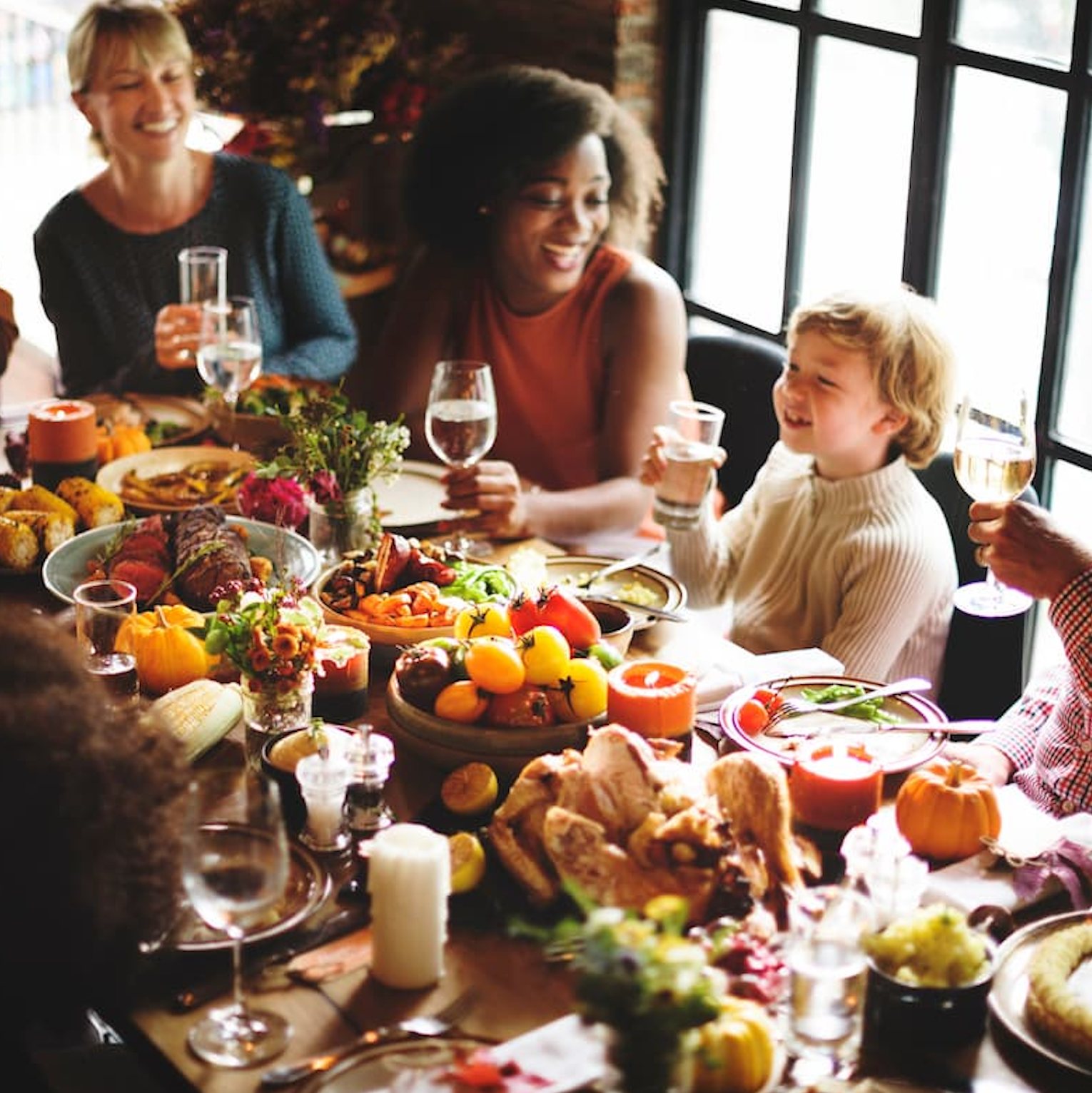10 Easy Ingredient Swaps for a More Inclusive Thanksgiving
Make your Thanksgiving table welcoming for everyone with simple ingredient swaps that support guests with food allergies, intolerances and dietary preferences.
By
Lana Pine
| Published on November 25, 2025
4 min read
Credit: Adobe Stock/Rawpixel.com

Thanksgiving is all about gathering — but for many people with food allergies, intolerances or dietary restrictions, the holiday meal can feel more stressful than celebratory. The good news? A few thoughtful ingredient swaps can make your menu far more inclusive without sacrificing flavor, texture or tradition. Whether you’re hosting someone who avoids gluten, dairy, nuts or eggs or prefers plant-based foods, these tweaks ensure that everyone can enjoy the feast.
Below are 10 smart, easy swaps that help all guests feel safe, seen and part of the celebration.
1. Swap Butter → Olive Oil or Vegan Butter
Butter shows up everywhere on Thanksgiving: mashed potatoes, stuffing, roasted vegetables and pie crusts. For guests who are lactose intolerant, allergic or vegan, olive oil or a high-quality vegan butter provides richness without the dairy. For baking, vegan butter offers a more familiar texture, while olive oil shines in savory dishes.
2. Swap Chicken Broth → Vegetable Broth
Stuffing, gravy and casseroles often rely on chicken broth, which excludes vegetarians and some religious dietary practices. Use vegetable broth for a seamless substitution — no one will taste the difference in most dishes.
3. Swap Wheat Flour → Gluten-Free Flour Blend
Gluten sneaks into gravy, dinner rolls, pie crusts and casseroles. A 1-to-1 gluten-free flour blend makes it easier than ever to accommodate gluten-free guests, especially in thickened sauces and baked goods. Just check the blend for rice flour if cooking for someone with multiple sensitivities.
4. Swap Heavy Cream → Coconut Milk
Coconut milk provides a creamy consistency perfect for mashed potatoes, creamy soups, pumpkin pie filling and whipped toppings. It’s dairy-free, soy-free and paleo-friendly — and when paired with traditional seasonings, the coconut flavor disappears into the background.
5. Swap Eggs → Flax or Chia “Eggs”
Baking for someone with an egg allergy or preparing vegan-friendly dishes? Mix 1 tablespoon ground flaxseed (or chia seed) with 3 tablespoons water to create a gelling, egglike substitute. Works well in muffins, quick breads, casseroles and veggie patties.
6. Swap Nuts → Seeds (Sunflower, Pumpkin, or Hemp)
Nuts frequently appear in salads, desserts, and sides like green beans or sweet potato casseroles. Swap in pumpkin seeds, sunflower seeds or hemp hearts for crunch without the allergy risk. They toast beautifully and mimic the texture of pecans or almonds.
7. Swap Traditional Pie Crust → Oat or Nut-Free Gluten-Free Crust
A gluten-free oat-based crust or a nut-free press-in crust makes holiday pies accessible without compromising flavor. These crusts hold up well to pumpkin, apple or pecan-style fillings — and often offer more interesting flavor and texture than traditional pastry.
8. Swap Worcestershire Sauce → Coconut Aminos or Tamari
Worcestershire sauce contains fish, making it unsuitable for vegan or allergy-sensitive eaters. Coconut aminos or gluten-free tamari replicate the same umami depth in gravies, marinades and roasted vegetables.
9. Swap Cream-of-Something Soups → Homemade Roux or Dairy-Free Sauce
Many classic casseroles rely on canned cream soups, which contain gluten, dairy and preservatives. Using a simple homemade sauce (broth + flour + oil) or a dairy-free version (broth + gluten-free flour + olive oil + herbs) creates the same creamy texture while supporting a much wider range of guests.
10. Swap Traditional Dinner Rolls → Gluten-Free or Sourdough Bread
For many, bread is a beloved part of Thanksgiving — but not all bread works for all bodies. Gluten-free rolls or naturally fermented sourdough can serve guests with sensitivities while still offering that warm, comforting carb moment everyone expects.
At its heart, Thanksgiving is about making room at the table — literally and emotionally. When guests feel considered and cared for, the meal becomes richer for everyone.

